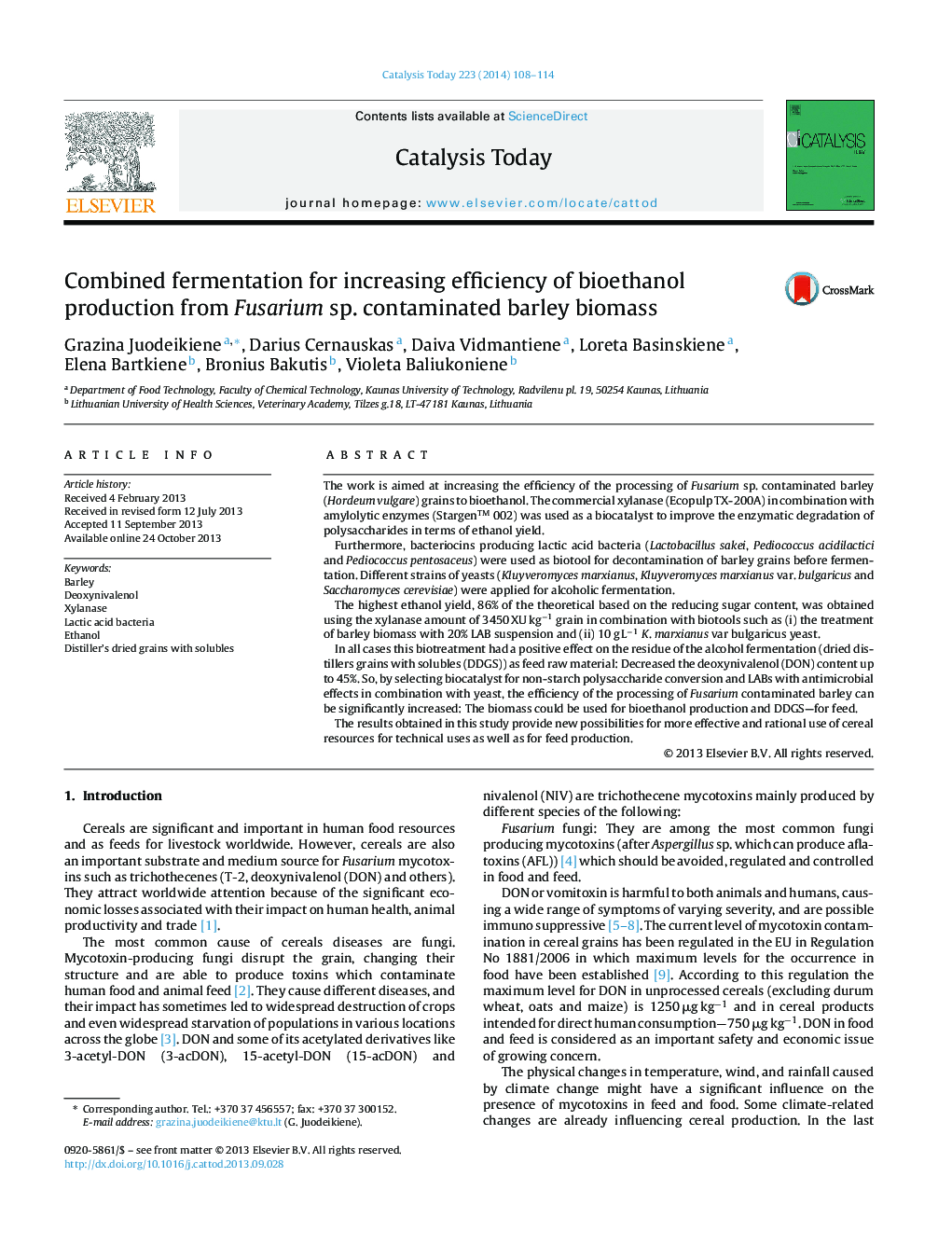| کد مقاله | کد نشریه | سال انتشار | مقاله انگلیسی | نسخه تمام متن |
|---|---|---|---|---|
| 54734 | 47024 | 2014 | 7 صفحه PDF | دانلود رایگان |

• Trichoderma reesei xylanase is an effective catalyst for biodegradation of non-starch polysaccharides in terms of ethanol yield.
• Antimicrobial lactic acid bacteria (LAB) used for treatment of Fusarium contaminated barley decrease DON in DDGS up to 45%.
• The treatment of contaminated barley with selected LAB has no significant impact on the ethanol yield.
• The efficiency of the processing of contaminated barley can be increased by selecting LAB in combination with yeast strain.
The work is aimed at increasing the efficiency of the processing of Fusarium sp. contaminated barley (Hordeum vulgare) grains to bioethanol. The commercial xylanase (Ecopulp TX-200A) in combination with amylolytic enzymes (Stargen™ 002) was used as a biocatalyst to improve the enzymatic degradation of polysaccharides in terms of ethanol yield.Furthermore, bacteriocins producing lactic acid bacteria (Lactobacillus sakei, Pediococcus acidilactici and Pediococcus pentosaceus) were used as biotool for decontamination of barley grains before fermentation. Different strains of yeasts (Kluyveromyces marxianus, Kluyveromyces marxianus var. bulgaricus and Saccharomyces cerevisiae) were applied for alcoholic fermentation.The highest ethanol yield, 86% of the theoretical based on the reducing sugar content, was obtained using the xylanase amount of 3450 XU kg−1 grain in combination with biotools such as (i) the treatment of barley biomass with 20% LAB suspension and (ii) 10 g L−1K. marxianus var bulgaricus yeast.In all cases this biotreatment had a positive effect on the residue of the alcohol fermentation (dried distillers grains with solubles (DDGS)) as feed raw material: Decreased the deoxynivalenol (DON) content up to 45%. So, by selecting biocatalyst for non-starch polysaccharide conversion and LABs with antimicrobial effects in combination with yeast, the efficiency of the processing of Fusarium contaminated barley can be significantly increased: The biomass could be used for bioethanol production and DDGS—for feed.The results obtained in this study provide new possibilities for more effective and rational use of cereal resources for technical uses as well as for feed production.
Figure optionsDownload high-quality image (95 K)Download as PowerPoint slide
Journal: Catalysis Today - Volume 223, 15 March 2014, Pages 108–114